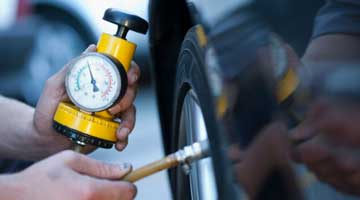When we think of vital car parts, not many of us would think of the car’s headlights. But, improving visibility on the road is crucial for any motorist.
Faulty headlights mean a failed MOT. Plus, if the Police catch you driving with a broken headlight, you could be fined £100. And, most importantly, faulty headlights can result in an accident, so you must take care of them.
So how can you do this? Don’t worry, we’ve created a car headlight guide to help you understand more.
In this section:
- How do headlight bulbs work?
- Types of car lights
- What lightbulb do I need for my car?
- Have you seen the light?
How do headlight bulbs work?
Headlights are essential for all vehicles. The bright beams guide drivers at night, increase visibility during poor weather, and make your vehicle more visible to other road users. Of course, we all know what headlights are for. The real question is, how do car lightbulbs work?
Put simply, headlights convert electric energy into light. This light is then projected forward by reflective materials surrounding the headlight bulb. A shutter partially covers this light, so it’s mostly projected onto the road, and not into oncoming traffic where cars driving towards you would be dazzled. Turning on your full beam removes this obstruction, but you should always dim your lights for other motorists.
Where it can get confusing is the different types of bulbs used for car headlights. Each works slightly differently and have their own pros and cons. With car headlights now explained, let’s move on to the different types of bulbs.
Types of car lights
To understand how to choose the right lightbulbs for your vehicle, it’s good to know the differences between them.
Halogen bulbs
More commonly known as ‘filament bulbs’, halogen bulbs are a staple for car manufacturers. Wallet-friendly and easy to replace, these bulbs work by heating a small metal filament that emits light. The bulb is then filled with halogen gas that makes the light brighter.
While these bulbs are the cheapest on this list, they won’t last as long as the others as the filament can be easily damaged. Plus, they’re not that energy efficient.
Pros of Halogen bulbs
- Industry-standard
- Cost-effective
Cons of Halogen bulbs
- Don’t last as long as other options
- Requires more energy to heat the bulb
LED bulbs
An LED (light emitting diode) is a semi-conductor that creates light when an electric current is passed through it. These bulbs are increasingly popular in new car models thanks to their low power consumption and long life. While this option is energy-efficient, it’s still 150-300% brighter than your typical halogen bulb.
Yet, these benefits do come with a higher price tag, plus additional fees for a cooling system installation to keep the LEDs at the right temperature. Also, you can’t swap out another bulb for an LED. In the UK, it’s illegal to replace a car bulb with an LED if a manufacturer didn’t fit it.
Pros of LED bulbs
- Energy efficient
- More visibility
Cons of LED bulbs
- More expensive
- Only suitable for cars already designed for LED bulbs
HID bulbs
High-intensity discharge (HID) bulbs, also known as ‘xenons’, use an electric arc between two electrons to create an intense, bright light. This light is 300-450% brighter than standard halogen bulbs and can come in pure white or with a blue tint.
Plus, because these bulbs don’t use filaments, they’re more durable for everyday road use. They’re also easy to fit and maintain. But, the price is this bulb’s biggest drawback and, while the extra light is great for your visibility, it can cause blinding glares for the surrounding motorists.
Pros of HID bulbs
- Light reaches a greater distance
- More durable than halogen bulbs
Cons of HID bulbs
- Costly to replace
- Intense glare to fellow motorists
What lightbulb do I need for my car?
Replacing a headlight bulb can be a pain. Thankfully, there are online ‘car bulb checkers’ that can help.
You’ll need to know your car’s manufacturer, model, and year for these online checkers. Just enter these details and your number plate to be given a list of bulb sizes for all the lights on your car. Look for the headlight section and take a note of the bulb type.
Or you can always check your car manual. The specific lightbulb should be listed, allowing you to find an exact match. Remember, the type of bulb can depend on your car.
Hopefully, this car lightbulbs guide has helped you to understand the different bulbs available and how to find out your own car’s headlight specifications.
Have you seen the light?
Hopefully, this car lightbulbs guide has helped you to understand the different bulbs available and how to find out your own car’s headlight specifications.
There is no perfect bulb. Each of the halogen, LED, and HID bulbs have their own pros and cons. What lightbulb you pick will largely depend on your car model and your budget.
Countless people rely on their cars for work, social, and family events. Make sure your car is maintained and road legal to enjoy many miles of happy motoring. To help further, check out AXA’s car insurance cover to ensure your car is always protected from whatever might lie on the road ahead.












